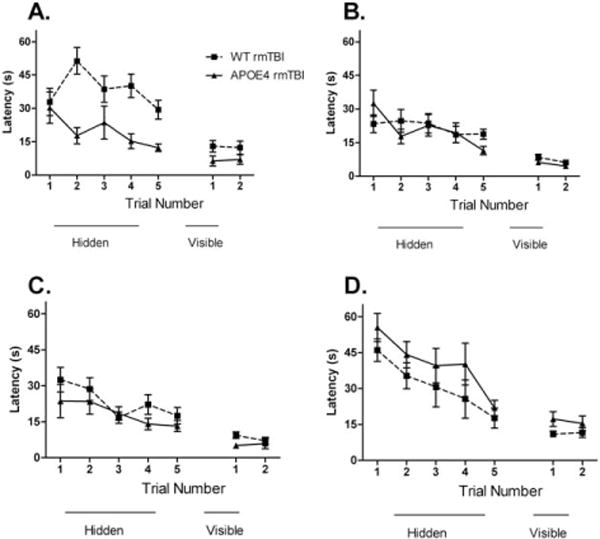FIGURE 6.

APOE4 does not worsen long-term Morris water maze (MWM) performance after repetitive mild traumatic brain injury (rmTBI). There were no baseline differences in MWM performance in sham-injured APOE4 versus wild-type (WT) mice (data not shown). (A) MWM performance 2 months after last injury in mice that underwent 5 rmTBIs in 5 days. Injured WT mice performed worse than injured APOE4 mice (p = 0.003) and WT sham-injured controls (p = 0.001, data not shown). Injured WT animals had worse performance on visible platform testing compared to injured APOE4 animals (p = 0.04). (B) MWM performance 2 months after last injury in mice that underwent 7 rmTBIs in 9 days. There were no differences in hidden platform performance between injured APOE4 mice and injured WT mice (p = 0.8). There were no differences in visual platform performance in injured APOE4 versus injured WT mice (p = 0.06). (C) MWM performance 6 months after last injury in mice that underwent daily 7 concussions in 9 days. There were no differences between injured APOE4 animals and injured WT animals (p = 0.2) on hidden platform performance. On visual platform testing, there were no differences in performance in injured APOE4 versus injured WT mice (p = 0.1). (D) Mice that were naive to the MWM when tested 6 months after their final injury showed no differences in hidden platform performance between WT and APOE4 mice (p = 0.1).
